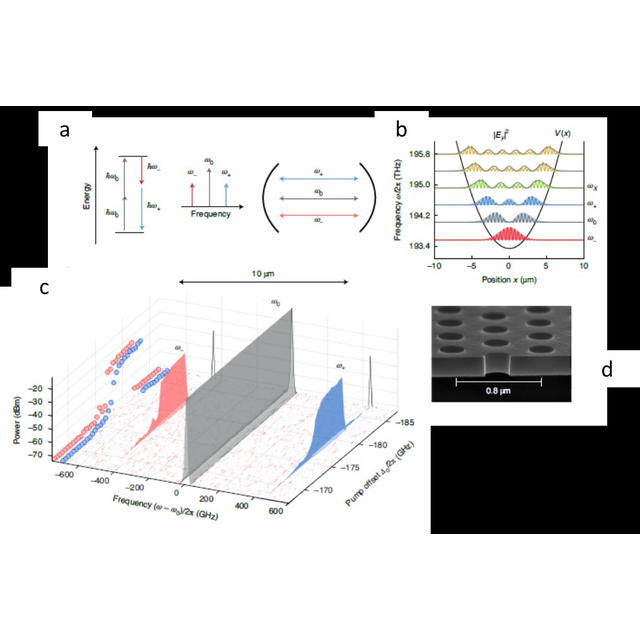Teams at Thales and C2N (CNRS/UPSaclay/UParis) have developed a novel miniaturized source of light called Photonic Crystal Optical Parametric Oscillator.
An Optical Parametric Oscillator (OPO) is similar to a laser in that it generates coherent light, namely photons with the same frequency, direction and polarization, except that here they are emitted in pairs. These photons are said to be correlated, meaning that the fluctuations in the physical properties (e.g. frequency) measured for one photon are not independent of those of the photon.This feat is exploited in many ways, in particular to decrease the noise in sensitive measurements (quantum sensing), to encode and encrypt information (quantum communication) and also to perform computing.
Optical Parametric Oscillators used to be bulky and expensive and by no means suitable for integration on a "photonic chip". In the last year, optical parametric oscillators have been miniaturized using optical resonators where light circulates many times inside tiny rings or disks. As a consequence of the size reduction, less power is required to operate OPOs.
Our miniaturized devices footprint is as small as the cross section of a human hair! Thales and C2N have managed to decrease their size and also their power consumption even further using a radically different concept to "trap" light in semiconductor materials, which is called “Photonic Crystal”. In these wavelength scale structures, light bounces many times against nanometric holes drilled in an ultra-thin membrane. This results in a huge enhancement of light matter interaction causing super-efficient generation of photons.
Because these OPOs are so small and consume very little power, many of them could be integrated on a single photonic chip and be operated simultaneously to generate non-classical light necessary to feed a quantum photonic circuit.
References :
Marty, G., Combrié, S., Raineri, F. et al.
Nat. Photonics 15, 53–58 (2021),
DOI : doi.org/10.1038/s41566-020-00737-z
Figure :
a) Principle of a triply resonant OPO. b) Parabolic potential for photons in our photonic crystal cavity. c) Optical characterization of our photonic crystal OPO. d) Scanning electron microscopy image of our photonic crystal slab.









